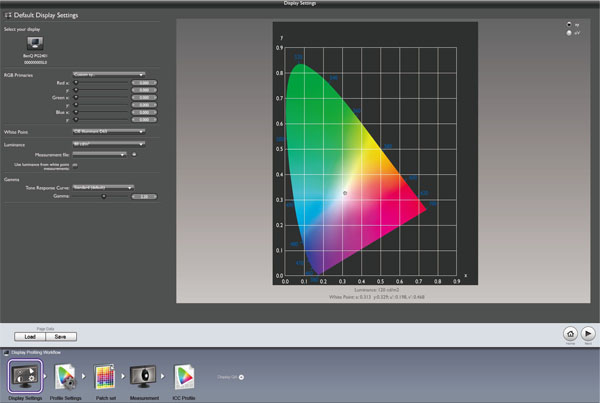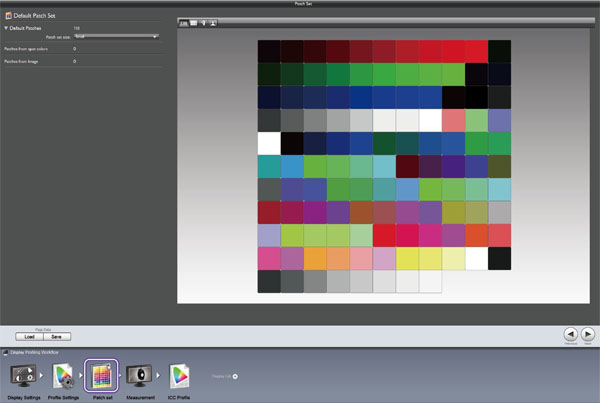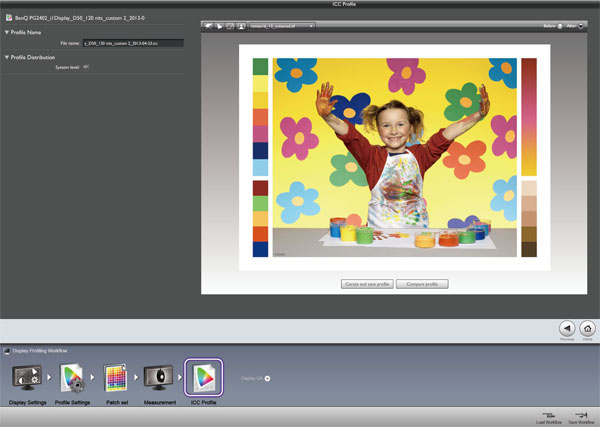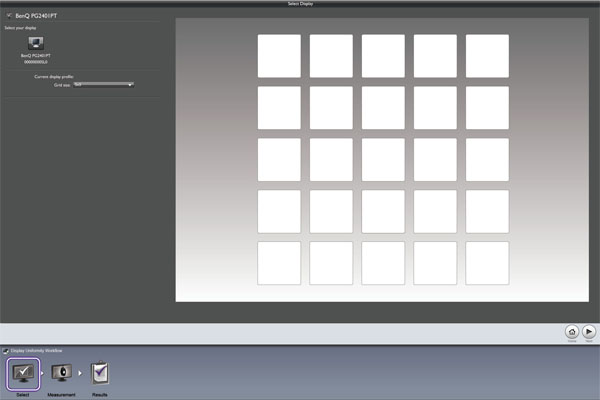BenQ PG2401PT, 24-inch Color Accurate Monitor Review
Photographers and printing pros look for the ultimate accuracy when they choose a monitor. BenQ answers the call with its 24-inch PG2401PT IPS display. It’s industry-certified for color accuracy, even without calibration. Today, we put it to the test.
Calibration With Palette Master
BenQ offers an alternative to the traditional OSD calibration in the form of a bundled app called Palette Master. It’s derived from X-Rite’s i1 Profiler software and offers adjustment of color gamut, grayscale, gamma, luminance, and screen uniformity. We installed it on our test system to give it a try. If you want to use the utility, you need an i1Pro, i1Pro 2, or an i1Display color meter.
After selecting Profile from the Home screen, the first set of options lets you specify the target color gamut and maximum luminance. If you select a custom gamut, you can enter the X and Y coordinates, along with the white point and gamma.
Next, you choose how precise your calibration will be by selecting the number of measurement patches. Small is 118 measurements. That's plenty in our opinion. If you select Large, over 400 patches are measured and you can expect to wait at least an hour for completion.
After positioning the meter, calibration is performed without further intervention. The result screen gives you a photo and a few color samples to make a before/after comparison. Once you're satisfied, save the profile to either the Calibration 1 or 2 memory slot. All of the data is stored in the PG2401PT’s firmware and an ICC profile is generated.
You can also create a screen uniformity look-up table. The grid size can be 3x3 or 5x5. By default, Palette Master measures 100-percent white (level 255) patterns, but you can use patterns at levels 16 or 128 if you want greater precision at lower brightness points.
We compared Palette Master’s results to our own OSD calibration and found them almost identical. The only discrepancy was a luminance reading about 7 cd/m2 higher than what we measured using CalMAN.
The biggest bummer tied to using the app is once you’ve set up a calibration memory, the Brightness control is locked out. If you want to change just the luminance value, you have to redo the entire process.
Get Tom's Hardware's best news and in-depth reviews, straight to your inbox.
Current page: Calibration With Palette Master
Prev Page OSD Setup And Calibration Of The BenQ PG2401PT Next Page Measurement And Calibration Methodology: How We Test
Christian Eberle is a Contributing Editor for Tom's Hardware US. He's a veteran reviewer of A/V equipment, specializing in monitors. Christian began his obsession with tech when he built his first PC in 1991, a 286 running DOS 3.0 at a blazing 12MHz. In 2006, he undertook training from the Imaging Science Foundation in video calibration and testing and thus started a passion for precise imaging that persists to this day. He is also a professional musician with a degree from the New England Conservatory as a classical bassoonist which he used to good effect as a performer with the West Point Army Band from 1987 to 2013. He enjoys watching movies and listening to high-end audio in his custom-built home theater and can be seen riding trails near his home on a race-ready ICE VTX recumbent trike. Christian enjoys the endless summer in Florida where he lives with his wife and Chihuahua and plays with orchestras around the state.
-
Xan13x So, maybe it's because I've sort of been out of the game for a while, but back when I got my current monitor, Samsung 27" something or other, 1920x1200 was kind of the standard for a decent monitor. I suppose that's changed? I've had no desire to get a new one since, so again I don't keep up with them, but it seems strange that four years later that resolution/aspect is no more.Reply -
mapesdhs Xan13x, alas it's the result of general consumer supply & demand,Reply
mixed with the convenience for manufacturers of making mostly
1080 screens. When I hunted for a 2560x1600 screen last year,
I was shocked at the prices, because the same thing has happened
at 2560, ie. the market has narrowed in on 1440 height instead of 1600,
so the latter are now expensive (assuming one can find them at all),
eg. the Iiyama XB3070WQS-B1 is about 700 UKP, and the HP Z30i
is more than 1000 UKP.
At the least one positive from all this is that good 1200-height IPS
panels are now much more affordable. My first 1920x1200 IPS was
an HP LP2475W which cost about 450 UKP, but today the Dell U2412M
costs less than half that much (is the Dell better? Well, yes & no,
different feature set, etc., but the screen is nice).
I gave up on finding an affordable IPS 2560x1600, and meanwhile it
was obvious review sites had settled on 1440 height anyway (a few
years ago many sites were still testing wtih 1600 screens, but not
now), so I bought a Dell U2713HM instead which works pretty well,
except for its irritating resolution limitation over HDMI (watchout for
that if you buy a new screen, some models only support their max
res via DVI or DP - the Dell I bought can't do more than 1080 via HDMI).
Ian.
-
martel80 ReplyMost accurate computer display tested on Tom's is a BenQ. Say what!?
In case you didn't know, BenQ is the parent company of AU Optronics, which is one of the largest panel manufactures in the world. Other companies (Samsung, Dell, Apple, etc.) use AUO panels in some of their products. -
knowom 16:10>16:9 for anything other than movies that extra pixel height for gaming is a major difference maker in a competitive MOBA game like LoL among other games. It's too bad cheap 1920x1200 displays got phased out for 1080p same with some of the other now odd ball display resolutions that were once much more common.Reply



